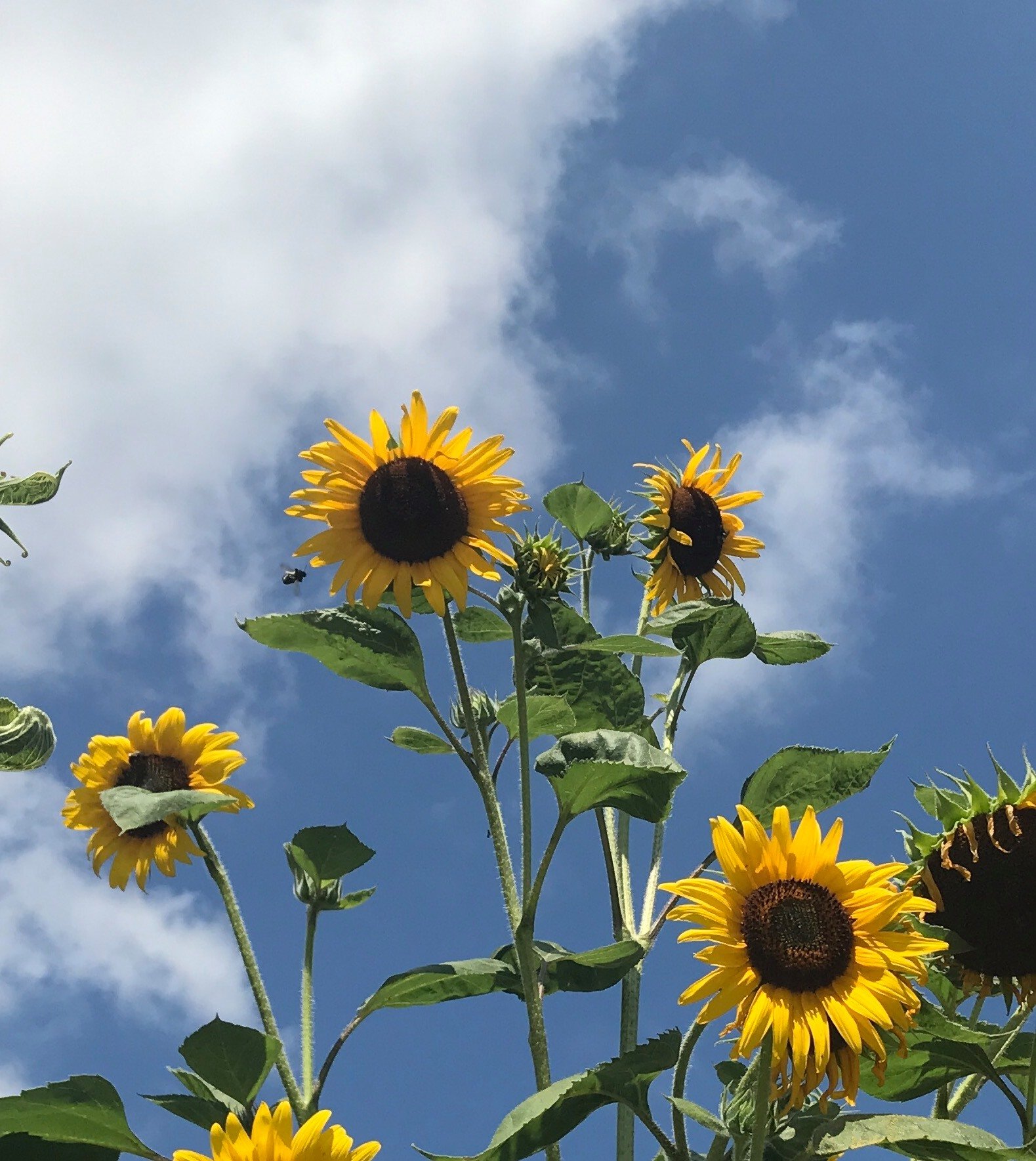A devil’s strip is the nickname for the slice of earth running between the street curb and the sidewalk in a residential area. I believe they are installed to increase the percentage of natural surface in an ocean of asphalt and cement, to aid run-off and storm water management. Don’t quote me on that.
I do not own the devil’s strip in front of my house, it is town property, but it is the unspoken rule that the homeowner maintains the space. For the first 10 years or so we did our best to keep it weed free and green; a task made possible only with herbicides and fertilizers. But it was just this hardpacked strip of trouble and the more I learned about the ecological futility of lawns, the less I cared about what it looked like. And as it was the only consistent area of my suburban plot that received full sun, it seemed there was a better use of the space. I was ready to give my sunny 40’ X 3’ plot to the pollinators.
Looking down the devil’s strip along the street. At the time, purple and whiteish flowers were in bloom.
I rented a tiller, tilled up what was left of the “lawn” and backfilled the strip with a compost soil mixture.
I threw down seed from an $8, 5-pound bag of eastern wildflower mix you find at a box store. I watered. As the garden is surrounded on all sides by solid, reflective surfaces, it tends to be dry and hot. (Maybe the reason for the nickname?)
Sunflowers against a blue summer sky.
Plants started popping up. At the time, I knew so little I wasn’t totally sure what was a wildflower and what was a weed (and now the distinguishing line between them seems more semantic than anything). I let everything grow. When the flowers did come up, I couldn’t tell a poppy from a zinnia, but no one could confuse the sunflowers. Standing up to 9 feet tall, they created a wall of green and yellow, so thick it became difficult to pull out of my driveway. My experiment was exceeding my expectations.
And then the neighbors came calling. The first year was an experiment in gardening but also an experiment in resiliency. People literally laughed at me. They stopped to tell me how ridiculous the garden was. I heard later of arguments between neighbors, some defending me, some angry with my choice to grow outside the box. The HOA sent letters asking me to “mow my lawn.”
But so many others stopped to chat, to take photos, to view the bees and butterflies. The garden became a landmark used by parents “You can ride your bike as far as the flowers, but no further,” I overheard. It became a destination for preschoolers; a place where walking slowly was rewarded with color, light, life, floral aromas and the buzzing of insects.
At the end of every growing season I mulch the garden with fallen leaves. Each year, the soil quality has improved. Today, five years later, the soil is rich with nutrients, dark and aromatic and home to all sorts of critters. I haven’t sprayed one ounce of fertilizer or herbicide and haven’t needed to add any amendments other than my own compost and leaf litter. And the space has evolved. I added a brick border on either side to better define the space. I registered the garden as a Pit Stop on the NC Wildlife Federation’s Butterfly Highway and I proudly display the sign. These changes seem to have eased my neighbor’s opposition. I have more fans than haters these days, or else the haters have just gone underground. I keep it as tidy and weed free as I dare, trying to balance the needs of the ecosystem with the rules of the HOA. I’ve ignored every letter to “mow my lawn or else” and eventually they’ve stopped coming. I think I proved that a change from the norm didn’t end the world (or crash home prices)! And it’s been a great joy to hear my neighbors tell me about the pollinator spaces they’ve created in their yards, inspired by my own.
The Summer of the Butterfly
In the summer of 2019, I decided to document my Lepidopteric garden visitors. I was determined to document any and every species of butterfly I could find. This meant often that pulling in and out of my driveway was interrupted for a quick photo session. This also meant that I never worked in the garden without my cell phone in my pocket, ready to smear the screen with a muddy thumb print to capture another friend on camera.
One hundred and seventy five butterfly species reside in NC and that summer, I documented on camera 18 different butterfly species in my devil’s strip alone; who knows how many I’ve missed over the years. I spent the fall researching each butterfly photographed and made a scrap book of my work (samples below). Since transforming my yard from an HOA approved, socially acceptable landscape to a more wild space, I’ve gardened by one motto: If no one is eating your plants, then your garden is not part of the ecosystem.
Below are selected pages from my journal, presenting just a handful of the species that visited the garden that year. I’ve also included photos taken over the years of various flowers and bees from the garden.
Do you have plans for a pollinator garden or maybe questions about how to get started? Feel free to reach out. And if you like what you’re reading, subscribe below. -Rachel















